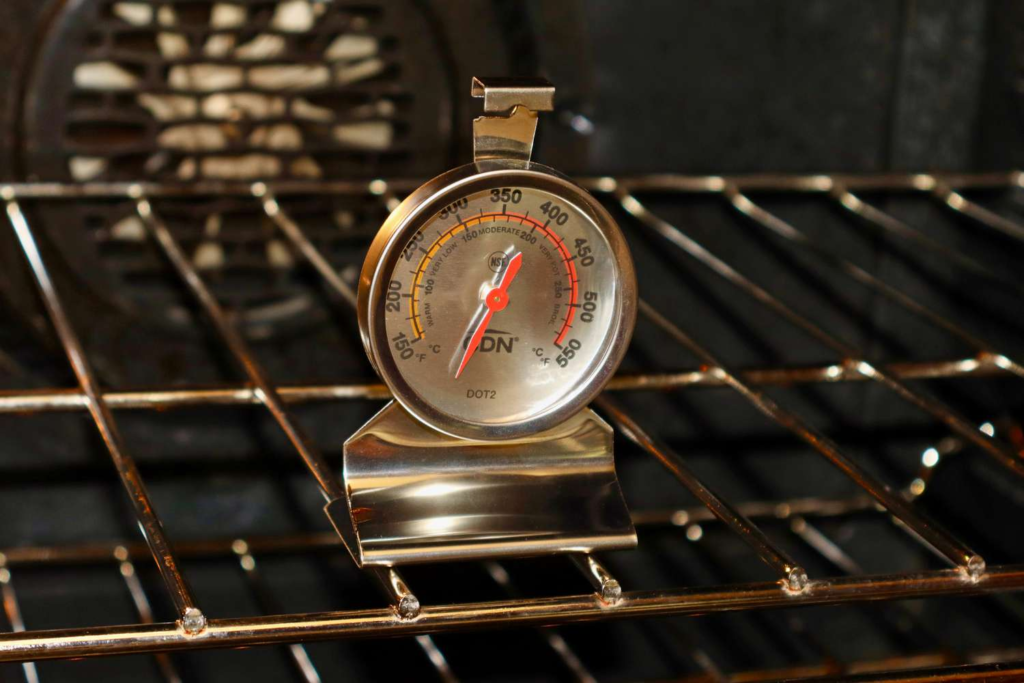Ever followed a recipe to the letter, only to have your cake come out underbaked or your roast overdone? The problem might not be your skills—it could be your oven. Most ovens are inaccurate by 25–50°F, and that’s where an oven thermometer comes in.
In this blog, we’ll explore what an oven thermometer is, why you need one, how to use it, and what to look for when buying the best oven thermometer for your kitchen.
What Is an Oven Thermometer?
An oven thermometer is a heat-resistant device that sits or hangs inside your oven to measure its actual internal temperature. Unlike your oven’s built-in display, which only shows a preset number, it gives you an accurate real-time reading of the true temperature.

Why You Need an Oven Thermometer
Even modern ovens can be surprisingly inaccurate. They often have hot and cold spots, or their built-in sensors may be improperly calibrated. This inconsistency can lead to undercooked chicken, burnt cookies, or flat cakes.
Benefits of Using Oven Thermometers:
- ✅ Accuracy: Get a precise temperature reading inside your oven.
- ✅ Better Baking Results: Perfect cakes, cookies, and breads every time.
- ✅ Improved Food Safety: Ensure meats and poultry are fully cooked.
- ✅ Save Time & Energy: Avoid reheating or overcooking due to uneven temps.

Types of Oven Thermometers
There are several types of oven thermometers on the market:
| Type | Features | Best For |
|---|---|---|
| Dial Thermometers | Analog, no batteries, affordable | Everyday baking & roasting |
| Digital Thermometers | LCD display, often with probes | Precision cooking |
| Infrared Thermometers | Measures surface temp (not internal) | Quick checks, not oven interior |
How to Use Oven Thermometers (Step-by-Step)
- Place the thermometer on a middle rack or hang it using the built-in hook.
- Preheat your oven to the desired temperature.
- Check the reading after 10–15 minutes.
- Adjust the oven setting if the temperature is off by more than 10–15°F.
- Re-check periodically, especially before baking delicate recipes.
Pro Tip:
Move the thermometers around to identify hot and cold spots in your oven.
Ideal Oven Temperatures for Common Tasks
| Task | Ideal Temp |
|---|---|
| Baking Bread | 375–425°F |
| Roasting Vegetables | 400–450°F |
| Baking Cookies | 325–375°F |
| Roasting Chicken | 350–375°F |
| Baking Cakes | 325–350°F |
What to Look for in the Best Oven Thermometer
When buying an oven thermometer, consider these key features:
- Wide Temperature Range (e.g., 100°F to 600°F)
- Clear, Easy-to-Read Dial or Display
- Durability (Made from stainless steel or heat-resistant materials)
- Stable Base or Hook Design
- Accuracy (±5°F margin is ideal)
- Calibration Options (optional but helpful)

Cleaning and Maintenance Tips
- 🧼 Wipe the thermometer with a damp cloth after it cools.
- ❌ Don’t submerge in water or place in dishwasher.
- 🔄 Test accuracy monthly with boiling water or ice bath (for digital models).
- 📦 Store in a dry drawer when not in use.
Frequently Asked Questions (FAQs)
❓ Can you leave an oven thermometer in the oven while cooking?
Yes! Oven thermometers are designed to withstand high heat and should remain inside the oven during use.
❓ Are oven thermometers accurate?
Quality oven thermometers from reputable brands are typically accurate within 5°F. It’s best to test yours when you first buy it.
❓ Where should I place my oven thermometer?
Place it in the center of the middle rack for the most accurate reading, or move it around to detect hot spots.
Final Thoughts
A reliable oven thermometer is one of the most underrated kitchen tools. It takes the guesswork out of baking, roasting, and reheating by providing accurate temperature readings. Whether you’re a home cook or a seasoned baker, using an oven thermometer will elevate your culinary game and save you from kitchen disasters.
Stop guessing and start cooking with precision—add an oven thermometer to your kitchen today!

Leave a Reply